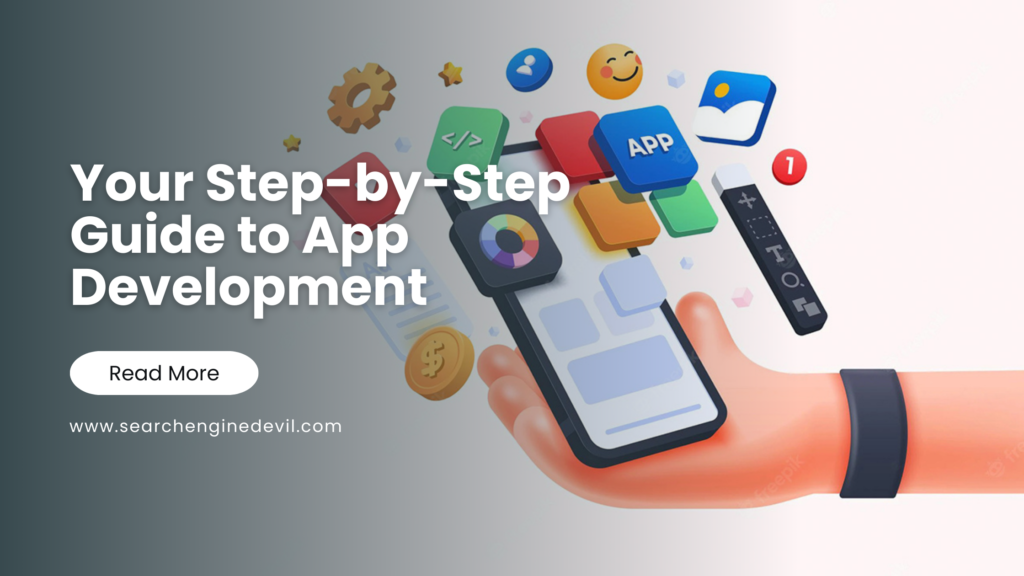The world of mobile apps is vast and ever-evolving, offering a platform for countless ideas to come to life. Whether you have a revolutionary concept or aim to solve a simple everyday problem, developing an app can be an exciting and rewarding venture. But for the uninitiated, the process can seem daunting. Fear not, aspiring app creators! This comprehensive guide will break down the journey into easy-to-follow steps, equipping you with the knowledge to navigate the app development landscape.
1. Spark the Idea and Define Your Vision
It all starts with a spark. What problem are you trying to solve? What unmet need can your app fulfill? Whether it’s a fitness tracker, a language learning tool, or a game that redefines entertainment, clearly define the purpose and value proposition of your app.
Market research is crucial at this stage. Identify existing apps in your niche, analyze their strengths and weaknesses, and understand the competitive landscape. This allows you to differentiate your app and cater it to a specific target audience.
2. Know Your Users: Build Your Target Persona
Understanding your users is paramount. Create a detailed persona that outlines their demographics, needs, behaviors, and pain points. This helps you tailor your app’s features, design, and user experience (UX) to resonate with them. Conduct user surveys, focus groups, or competitor app testing to gather valuable insights and ensure your app meets their expectations.
3. Craft a Winning App: Feature Prioritization
With a clear vision and user understanding, it’s time to define the features that will bring your app to life. Start by listing all potential features, then prioritize them based on importance and user needs.
Focus on creating a Minimum Viable Product (MVP) – a version of your app with the core features that address the most critical user needs. This allows you to gather real-world feedback, iterate your design, and refine your product before investing heavily in additional functionalities.
4. Wireframing and Prototyping: Visualize Your App
Wireframes are low-fidelity mockups that sketch the app’s layout and functionality. They help visualize the user flow and information architecture, ensuring a smooth and intuitive experience. Design tools like Figma or Adobe XD allow you to create interactive prototypes, enabling users to test basic functionalities and provide feedback on the usability.
5. Choose Your Development Path: Code or No-Code?
There are two primary development approaches:
- Coding: This offers complete control over the app’s functionality and design but requires programming expertise. Popular languages for mobile app development include Swift (for iOS) and Kotlin (for Android). Hiring professional developers or learning to code yourself are options here.
- No-code platforms: These platforms provide drag-and-drop interfaces and pre-built components, enabling users with no coding experience to create basic apps. While offering limited customization, they are a good starting point for simple app ideas.
6. Design for Engagement: User Interface (UI) and User Experience (UX)
The success of your app heavily relies on its user interface (UI) and user experience (UX). The UI refers to the visual elements – the layout, colors, fonts, and graphics. It should be aesthetically pleasing, intuitive, and consistent with your brand identity. The UX encompasses the entire user journey, ensuring smooth interaction, clear navigation, and a seamless experience.
7. Security Matters: Prioritize Data Protection
In today’s digital world, data security is of paramount importance. Implement robust security measures to protect user data, including secure authentication, data encryption, and regular vulnerability assessments. Ensure your app complies with relevant data privacy regulations like GDPR (EU) and CCPA (California).
8. Testing, Refining, and Launch: The Final Stretch
Rigorous testing is crucial before releasing your app to the public. Conduct internal testing, user testing with your target audience, and beta testing with a wider group to identify and address bugs, glitches, and usability issues.
Once you’re confident in your app’s quality, it’s time to launch! Different app stores (Apple App Store and Google Play Store) have specific submission guidelines and fees. Ensure your app adheres to their guidelines and complete the submission process meticulously.
9. Market Your Masterpiece: Spreading the Word
With your app launched, the work doesn’t stop there. Develop a comprehensive marketing strategy to reach your target audience. Utilize social media marketing, content marketing, influencer outreach, and App Store Optimization (ASO) techniques to increase visibility and downloads.
10. Listen, Learn, and Iterate: Continuous Improvement
The app development journey doesn’t end with launch. Continuously monitor user feedback and app analytics to understand how users interact with your app.



